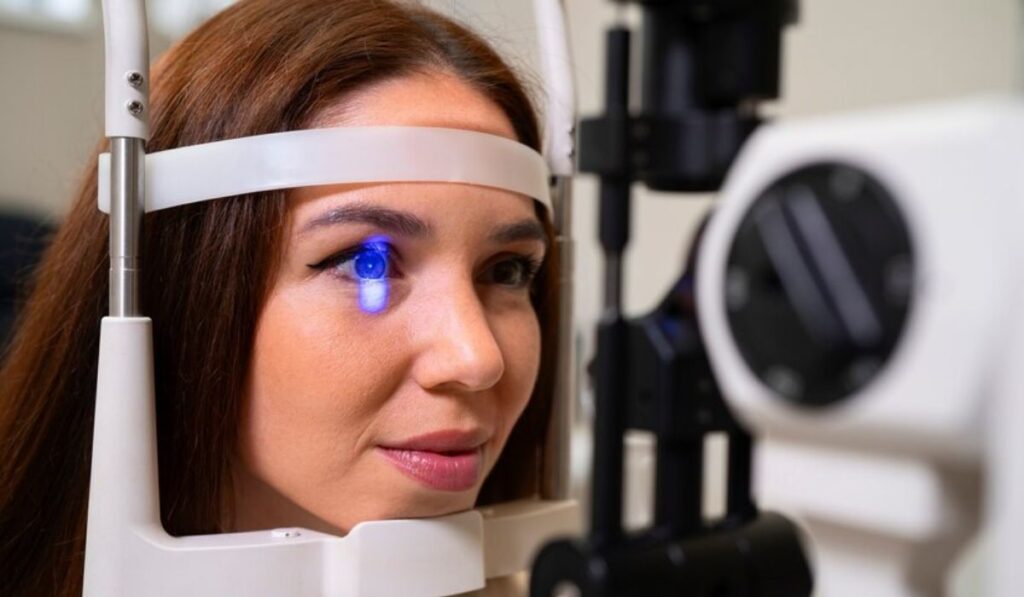Laser eye surgery is a sophisticated vision-correction treatment that has impacted the lives of millions of patients worldwide. The procedure involves using an advanced laser to modify the curvature of the cornea to improve vision. While it offers numerous benefits, individuals should remain aware of its potential limitations and restrictions. This article examines which vision problems can be corrected by laser eye surgery and which ones cannot.
What Laser Eye Surgery Can Fix
Laser eye surgery candidates should be at least 18 years of age and have a stable spectacle or contact lens prescription for at least one year. They should have clear eyesight with no major eye complications such as glaucoma or cataracts. Corneal thickness is taken into consideration because the procedure requires certain amounts of corneal tissue to be successful. Therefore, it is crucial to consult with the best laser eye surgeon to determine individual eligibility and ensure optimal results. Here are some of the conditions that eye surgery can fix:
Refractive Errors
The most common refractive errors are myopia, hyperopia, and astigmatism. Laser eye surgery for astigmatism and other refractive errors addresses these problems by slightly reducing corneal tissue and altering its shape. For myopia, the cornea will be flattened. In hyperopia, the curvature of the cornea is made steeper. As for astigmatism, the cornea is aspherized to correct the imperfection.
Presbyopia
Presbyopia refers to vision changes that occur with age, typically starting around the age of 40 and above, although it can begin earlier in some individuals. It is a condition that affects one’s ability to perform near-vision tasks such as reading fine print or viewing objects up close. Presbyopia happens when the lens of the eye loses its ability to alter its shape as one grows older.
Laser surgery is a good option for treating presbyopia. Monovision LASIK is one such approach. In this procedure, each eye is operated on separately: one yete is corrected for distant vision, while the other is corrected for close vision. As the patient adapts to their new vision, the brain learns to use each eye for its specific task. This can minimize or even phase out the use of reading glasses.
Another technique is corneal inlay surgery. It involves implanting a small lens in the cornea. This corrects another type of presbyopia causing near blindness.
Posterior Capsule Opacification
Posterior capsule opacification (PCO) or secondary cataract is a potential complication that may develop after cataract surgery. It is typically not described as a cataract but a cataractous lens capsule. This can lead to the development of a secondary cataract, which creates a similar haze to the initial cataract. PCO occurs when lens epithelial cells migrate onto the capsule.
Treatment for PCO is typically a swift and efficient procedure known as YAG laser capsulotomy. The process involves using a laser to make a tiny hole in the cloudy lens capsule, which allows light to pass through again clearly.
What Laser Eye Surgery Cannot Fix
Effective pre-surgery testing increases the chances of success with laser surgery. It helps identify suitable candidates and assess potential risks. This is useful because laser surgery has limitations and cannot assist individuals with advanced cataracts.
Advanced Cataracts
Cataracts occur when the eye’s lens becomes clouded. Sometimes, the lens hardens too much to be treated with laser surgery. In such cases, cataract surgery is an optimal option involving the replacement. of the cloudy lens with an artificial one. formation entails the process whereby the healthy eye lens turns opaque. Sometimes, the lens becomes too hard, and it cannot be liquefied to undergo the laser treatment. Cataract surgery as a good solution for this, as it replaces the cloudy lens with an artificial one.
Macular Degeneration
Laser surgery cannot treat macular degeneration in either its dry or wet form. This disease targets a central part of the retina. Macular degeneration is currently treated using injections and administration of certain nutrients and vitamins.
Glaucoma
Glaucoma, a condition characterized by high eye pressure that damages the optic nerve, cannot be treated with laser surgery. Common approaches for treating glaucoma include the use of medication or conventional operations.
Keratoconus
Keratoconus, a condition in which the cornea progressively changes shape, is not compatible with laser surgery. Surgery is risky because of the irregular corneal shape associated with it. Treatment options include corneal cross-linking to increase corneal rigidity or the use of specialized contact lenses. In extreme cases, corneal transplantation surgery may be used.
Getting Started With Laser Eye Surgery
Laser eye surgery offers significant benefits for correcting various vision problems but is not suitable for every vision issue. Patients should carefully evaluate their options to select the optimal treatment for their needs. Contact a reputable laser surgery practice today and see if it can help improve your quality of life.







